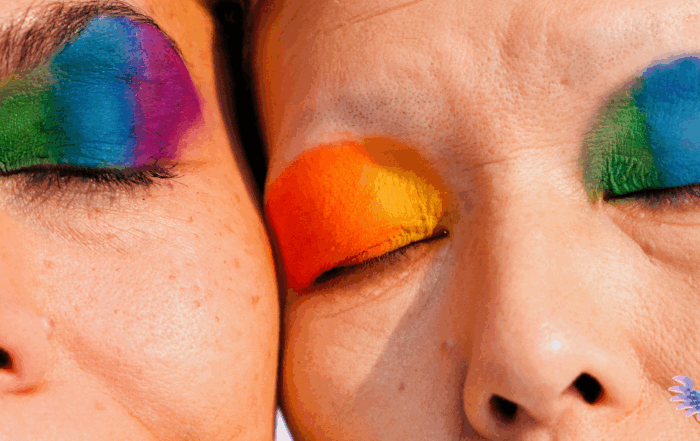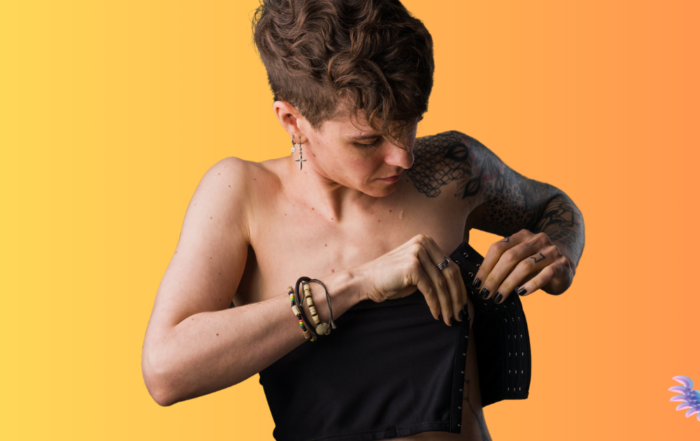Gender Affirmations: Understanding Social Transitions
When your kid identifies as trans or non-binary, their first step to align with their affirmed gender may be making changes socially in how they express their gender. Supporting them with these changes is one of the most important things you can do to improve your kid’s mental health and resilience as they explore what’s most authentic to them. This is a social ‘trial period’ to find where on the gender spectrum they feel most comfortable, thus informing future decisions.
All changes at this level are reversible.
A social transition doesn’t send your child down a path of no return. If your kiddo is prepubescent, this is actually the only option for authentic embodiment. Unlike what some media scare tactics have reported, there are no medical interventions (hormones or surgeries) available for prepubescent kids.
Making social changes are one of the few ways for your kid to go from theory to practice; this is often true for adults as well since most gender diverse people need to have some experiences that affirm their gender to gain clarity about the steps they need to take to affirm their gender.
For most kids an affirmed name and pronouns usually come first, helping them feel supported and seen by their closest circle of friends and family. Your kid may not know their definitive name yet, and may ask you to use some genderless form of their given name and to use the pronouns that feel right for them. They may try several names looking for the right fit, or even ask you to give them a new name.
We´ve heard some parents say it’s impossible to make this change, that it’s “too hard.” It’s best not to tell yourself that because although it can be a struggle, it’s not impossible. In fact it’s easier than you think when you remember that not honoring your child’s affirmed name renders them invisible which is extremely painful for your kid. On the other hand, your support opens lines of communication and improves their mental health.

It’s amazing how some kids move from experiencing dysphoria to gender euphoria with these small changes. Of course social changes may not fix everything for long, especially if your kid has entered puberty; the struggle could continue until they find other ways to authentically embody their gender. How will you know if your kid finds comfort with social changes alone or will need to take some additional steps? Experience!
For some kids authenticity is found when using props or prosthetics to accentuate their gender or hide those parts that are incongruent with their affirmed gender
For example, breasts are an issue either way: trans boys and nonbinary kids assigned female at birth can feel a lot of anxiety if they start growing them, whereas, for trans girls and nonbinary kids assigned male at birth, it could be an issue to be flat chested. This is when your kid may ask to use binders to help them look flat or ask for a bra and breast forms to create the look of breasts. Some older kids struggle with their genitals and may ask for packers and gaffes to help them manage dysphoria around genitals, especially in public. The best way you can help your kid is to find appropriate safe options and learn how to use them. Improper use of props & prosthetics could harm your kid, so information is power..
If you’ve come to the place where you know that supporting your kid’s social transition is the best way to improve their gender health and improve their mental health, you will most likely find yourself concerned with managing your kid’s social circle so they can navigate the world safely, as well as managing your own. What are people going to think? Will they be supportive? What about my kid´s school? The use of bathrooms? Indeed, these are legitimate questions that concern most of us and fall squarely in the next phase of your gender journey, Coming Out.
This is a much bigger topic, but in brief, It helps to be equipped with the best information about the construct of gender (Gender 101) and your kid’s legal rights.
The most powerful key to success when you must inform someone about your kid’s social transition is to do it unapologetically and with your kid’s input. Not everyone needs to know, but some people do and it’ll be impossible to hide it from your closest circle anyway. You’ll no doubt have positive surprises and possibly some negative reactions too, so keep in mind that providing your kid with a safe environment should be your priority. There may be times when you need to take distance from some people in order to protect yourself, your family, and your kiddo.
Want to learn more? Get the full benefit of all our resources by joining the TransFamily Alliance community!
https://www.transfamilyalliance.com/support-community/
Gender Affirmations: Understanding Social Transitions
When your kid identifies as trans or non-binary, their first step to align with their affirmed gender may be making changes socially in how they express their gender. Supporting them with these changes is one of the most important things you can do to improve your kid’s mental health and resilience as they explore what’s most authentic to them. This is a social ‘trial period’ to find where on the gender spectrum they feel most comfortable, thus informing future decisions.
All changes at this level are reversible.
A social transition doesn’t send your child down a path of no return. If your kiddo is prepubescent, this is actually the only option for authentic embodiment. Unlike what some media scare tactics have reported, there are no medical interventions (hormones or surgeries) available for prepubescent kids.
Making social changes are one of the few ways for your kid to go from theory to practice; this is often true for adults as well since most gender diverse people need to have some experiences that affirm their gender to gain clarity about the steps they need to take to affirm their gender.
For most kids an affirmed name and pronouns usually come first, helping them feel supported and seen by their closest circle of friends and family. Your kid may not know their definitive name yet, and may ask you to use some genderless form of their given name and to use the pronouns that feel right for them. They may try several names looking for the right fit, or even ask you to give them a new name.
We´ve heard some parents say it’s impossible to make this change, that it’s “too hard.” It’s best not to tell yourself that because although it can be a struggle, it’s not impossible. In fact it’s easier than you think when you remember that not honoring your child’s affirmed name renders them invisible which is extremely painful for your kid. On the other hand, your support opens lines of communication and improves their mental health.

It’s amazing how some kids move from experiencing dysphoria to gender euphoria with these small changes. Of course social changes may not fix everything for long, especially if your kid has entered puberty; the struggle could continue until they find other ways to authentically embody their gender. How will you know if your kid finds comfort with social changes alone or will need to take some additional steps? Experience!
For some kids authenticity is found when using props or prosthetics to accentuate their gender or hide those parts that are incongruent with their affirmed gender
For example, breasts are an issue either way: trans boys and nonbinary kids assigned female at birth can feel a lot of anxiety if they start growing them, whereas, for trans girls and nonbinary kids assigned male at birth, it could be an issue to be flat chested. This is when your kid may ask to use binders to help them look flat or ask for a bra and breast forms to create the look of breasts. Some older kids struggle with their genitals and may ask for packers and gaffes to help them manage dysphoria around genitals, especially in public. The best way you can help your kid is to find appropriate safe options and learn how to use them. Improper use of props & prosthetics could harm your kid, so information is power..
If you’ve come to the place where you know that supporting your kid’s social transition is the best way to improve their gender health and improve their mental health, you will most likely find yourself concerned with managing your kid’s social circle so they can navigate the world safely, as well as managing your own. What are people going to think? Will they be supportive? What about my kid´s school? The use of bathrooms? Indeed, these are legitimate questions that concern most of us and fall squarely in the next phase of your gender journey, Coming Out.
This is a much bigger topic, but in brief, It helps to be equipped with the best information about the construct of gender (Gender 101) and your kid’s legal rights.
The most powerful key to success when you must inform someone about your kid’s social transition is to do it unapologetically and with your kid’s input. Not everyone needs to know, but some people do and it’ll be impossible to hide it from your closest circle anyway. You’ll no doubt have positive surprises and possibly some negative reactions too, so keep in mind that providing your kid with a safe environment should be your priority. There may be times when you need to take distance from some people in order to protect yourself, your family, and your kiddo.
Want to learn more? Get the full benefit of all our resources by joining the TransFamily Alliance community!
https://www.transfamilyalliance.com/support-community/







